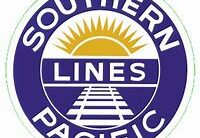 Founded in 1865 by a group of businessmen in San Francisco, the Southern Pacific was created as a rail line from San Francisco to San Diego. By 1883, the line extended all the way to New Orleans.
Founded in 1865 by a group of businessmen in San Francisco, the Southern Pacific was created as a rail line from San Francisco to San Diego. By 1883, the line extended all the way to New Orleans.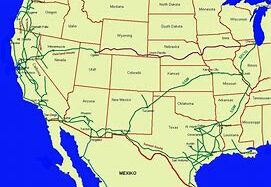 By the 1980s, route mileage had dropped to 10,423 miles (16,774 km), mainly due to the pruning of branch lines.
By the 1980s, route mileage had dropped to 10,423 miles (16,774 km), mainly due to the pruning of branch lines. Most passenger units were painted originally in the Daylight scheme as described above, though some were painted red on top, silver below for the Golden State (operated with the Chicago, Rock Island and Pacific Railroad) between Chicago and Los Angeles. Silver cars with a narrow red band at the top were used for the Sunset Limited and other trains into Texas.
Most passenger units were painted originally in the Daylight scheme as described above, though some were painted red on top, silver below for the Golden State (operated with the Chicago, Rock Island and Pacific Railroad) between Chicago and Los Angeles. Silver cars with a narrow red band at the top were used for the Sunset Limited and other trains into Texas. Like most railroads, the SP painted most of its steam locomotives black during the 20th century, but after 1945 SP painted the front of the locomotive's smokebox silver (almost white in appearance), with graphite colored sides, for visibility.
Like most railroads, the SP painted most of its steam locomotives black during the 20th century, but after 1945 SP painted the front of the locomotive's smokebox silver (almost white in appearance), with graphite colored sides, for visibility. Anticipating the failed Southern Pacific Santa Fe merger in the mid 1980s, the "Kodachrome" paint scheme (named for the colors of the Kodak boxes that the film came in) was applied to many Southern Pacific locomotives. When the Southern Pacific Santa Fe merger was denied by the Interstate Commerce Commission, the Kodachrome units were not immediately repainted, some even lasting up to the Southern Pacific's end as an independent company.
Anticipating the failed Southern Pacific Santa Fe merger in the mid 1980s, the "Kodachrome" paint scheme (named for the colors of the Kodak boxes that the film came in) was applied to many Southern Pacific locomotives. When the Southern Pacific Santa Fe merger was denied by the Interstate Commerce Commission, the Kodachrome units were not immediately repainted, some even lasting up to the Southern Pacific's end as an independent company.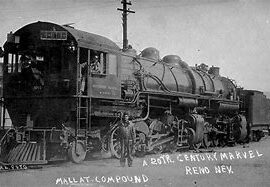 Well known were the Southern Pacific's unique "cab-forward" steam locomotives.[2] These were 2-8-8-4 locomotives set up to run in reverse, with the tender attached to the smokebox end of the locomotive.[2] Southern Pacific had a number of snow sheds in mountain terrain, and locomotive crews nearly asphyxiated from smoke in the cab.
Well known were the Southern Pacific's unique "cab-forward" steam locomotives.[2] These were 2-8-8-4 locomotives set up to run in reverse, with the tender attached to the smokebox end of the locomotive.[2] Southern Pacific had a number of snow sheds in mountain terrain, and locomotive crews nearly asphyxiated from smoke in the cab.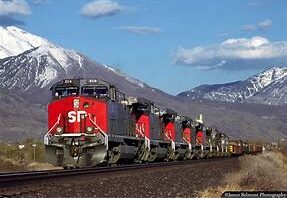 The Southern Pacific merged with Union Pacific on Sept. 11, 1996.
The Southern Pacific merged with Union Pacific on Sept. 11, 1996.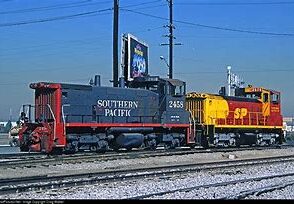
You are here: Home / Links (Clubs, Fallen Flags, Societies) / “Fallen Flags” / Southern Pacific Railroad